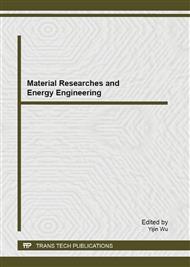p.144
p.149
p.156
p.161
p.167
p.173
p.178
p.182
p.188
Special Nylon Fabric as a New Material for Reinforcing Cement Composite
Abstract:
Textile reinforced concrete (TRC) is a new composite material in structural engineering, in which textile fabrics are used as reinforcement. In recent years, much research has been done to investigate the bending behavior of TRC samples. The focus of this research is on the use of low performance yarns as reinforcement and investigating the effect of finesse of yarns and reinforcement ratio on the bending behavior of TRC samples. The comparison of samples strengthened with same number of fabric layers but made up different finesses show that ultimate strength of samples increases in the yarns with lower finesse. Meanwhile the results show that reinforcement ratio is an important factor on bending behavior of TRC samples and strain hardening behavior can be obtained in 1/15% of reinforcement ratio in coarser yarns.
Info:
Periodical:
Pages:
167-172
Citation:
Online since:
September 2013
Authors:
Keywords:
Price:
Сopyright:
© 2013 Trans Tech Publications Ltd. All Rights Reserved
Share:
Citation:


